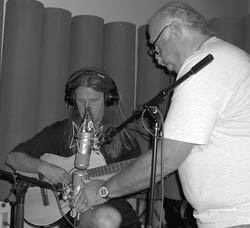Editor’s note: If you missed the earlier discussion from Bruce, click here.
Over the years, I have been very fussy about the volume levels that I use in the control room. I have always tried to observe the American OSHA sound-exposure standards.
I like to test my mixes at a variety of volume levels, and on a variety of different speaker systems. This makes sure that the mix will sound good anywhere. If a mix sounds good at a low SPL (sound pressure level), it will sound great at higher levels.
Save your ears – we only get two!
For both recording and mixing, I currently use Westlake Audio Lc 3w12 speaker systems. Glenn Phoenix of Westlake Audio called me one day and said that he had just finished a new speaker design. He suggested that I give it a serious listen.
I was a bit skeptical at first about trying any new music-mixing speaker, but I should have known better than to underestimate Glenn when it comes to an audio-design issue.
He brought a pair of his new speakers to the studio so I could check them out. When I sat down at the console to listen, I was absolutely amazed! I have never heard speakers with more points of sound-source definition in the left-to-right panorama.
In addition, the low end is spectacular! The scale of the sound-field is flawless.
To me, the mixing phase of my music projects is very personal and can get a bit intense. Mixing is the last phase of a project where I can make an artistic contribution to the sonics of the music, so the speakers are extremely critical to the project’s success.
Of course, any discussion of hyper-fidelity loudspeakers would be incomplete without an in-depth look at the amplifiers that drive those loudspeakers and the wire or cable that connects the amplifiers to the speakers, as well as the wire or cable that connects those amplifiers to their source.
In most cases, that source would be the monitor output of an extremely high-quality mixing desk.
Here’s an interesting little story that explains how I found the monitor amplifiers that I have used for music mixing for the past few years:
Early one morning, my good friend Trond Braaten called me from Fredrickstad, Norway, and said that in a week he would be coming to the USA, and he was going to hand-carry on the plane a very heavy Norwegian-made power amplifier that was going to change my life!
I thought to myself, “Yeah, sure.” Up to that point, all I knew about Norway could be summed up in four words: beautiful boats and salmon!
I learned something. Don’t ever underestimate the Norwegians!















